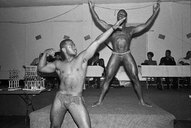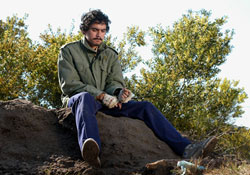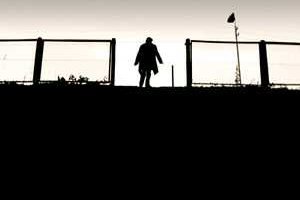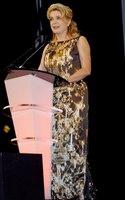Tarkovsky
The Lumiere is presenting a season of films by Andrei Tarkovsky between 13 and 25 January , including Solaris, Stalker and The Steamroller and the Violin. According to Sean Martin, who wrote the Pocket Essentials title on the great director, Tarkovsky "was part of the generation of Soviet filmmakers that emerged during the Khrushchev Thaw years, which also saw the emergence of such directors as Otar Iosseliani, Sergei Parajanov and Andrei Mikhalkov-Konchalovsky. Tarkovsky made only seven full-length films, yet this slender oeuvre has established him as the most important and well-known Russian director since Eisenstein. Although Tarkovsky's reputation continues to grow, especially in North America, where initial critical reaction was decidedly cooler than in Europe, his genius was recognised within his own lifetime by Jean-Paul Sartre, who championed Tarkovsky's first feature, Ivan's Childhood, and Ingmar Bergman.
Still according to Martin, "Tarkovsky's films are slow, dreamlike searches for faith and redemption, and it comes as no surprise to learn that, during his years in the Soviet Union, he was often criticised for 'mysticism' and his continued failure to tackle subjects in a style more acceptable to socialist realism. And yet Tarkovsky and his films were very much a product of the Soviet system, which ironically allowed directors a great deal of freedom to express themselves."
Luis Buñuel
Catherine Deneuve in Belle du Jour
Widely acknowledged as one of the greatest directors of all time with his irreverent and surrelist-inflected films, Luis Buñuel gets a two-month retrospective at the National Film Theatre in London, starting today with an extended season of one of his most famous works, Belle du Jour.
Buñuel was born in the Aragon region of Spain. A student friend of Federico García Lorca and Salvador Dalí, he established his early reputation with the Surrealist classics Un Chien andalou and L'Age d'or, the former probably the most famous art film ever made. Buñuel's films are a unique legacy from one of the greatest artists to emerge amidst the revolutionary beginning of the 20th century. In a world of depoliticised arts and relentless globalisation, his films continue to demand attention. That's not to say, however, that Buñuel was ever pretentious or overly intellectual. His rural upbringing informed his imagination as did his sense of humour and obsessions. He never intended his films to mean anything but what you see on the screen, and this directness are part of the reason that they are so engaging.
The season will show many of the titles from his Mexican phase, which, although less famous and more conventional in form, include some real gems such as the study of jealousy El, the quirky analysis of Latin male character The Criminal Life of Archibaldo de la Cruz and Nazarin.
Other releases
Paris is Burning
The ICA at the Mall in London is one of the places to be in January. The venue will be re-releasing the classic documentary Paris is Burning, by Jennie Livingstone, the film who showed the world the community behind vogue balls in New York in the late 1980s, which were the inspiration for Madonna's song Vogue and the look and choreography she adopted at the time. The film focus on a troupe of outcasts and outsiders who belong to this world of underground competitive performing. Livingstone brilliantly captures the rituals, dance routines and many colourful characters that made the scene (between 5 and 18 January).
The ICA will also be showing Iraq in Fragments, the triple award winner at 2006 Sundance Film Festival for best directing, editing and documentary cinematography. Director James Longley creates a view of modern-day Iraq that, while familiar, is not quite the same from what we see on the news. Three chapters take us through Sunni, Shiite and Kurdish territory, with the immediate, vérité footage and personal stories captured during two years of shooting taking on a poetic life of their own. This film has reaped praise wherever it has been shown and it is a welcome ray of light in the murky waters that is the press coverage related to the tragic situation in Iraq (between 19 and 31 January).
ICA +





























